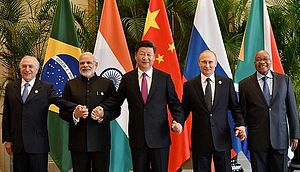India and China did manage to resolve their more than two-month standoff near the tri-junction with Bhutan just days before the BRICS Summit in Xiamen (schedule for September 3-5). A statement from India’s Ministry of External Affairs said, “Expeditious disengagement of border personnel at the faceoff site at Doklam has been agreed to and is ongoing.”
China’s Foreign Ministry spokeswoman Hua Chunying commented on the issue, saying, “At 1430 or so on August 28, India withdrew its personnel and equipment to the Indian side of the border line.” She also said China would make “necessary adjustments and deployments according to the changes.”
Both sides claimed victory. The Indian side withdrew its troops to their pre-June positions and the Chinese reportedly agreed to stop road construction.
While both sides seem to have found a solution that allowed them to back down, ties between New Delhi and Beijing are likely to remain circumspect for some time.
The Doklam tensions cast a significant shadow over economic ties between both countries. Economic ties have been one of the main drivers of bilateral relations between China and India.
While New Delhi did not go to the extent of boycotting Chinese goods, as suggested by some groups, India did send a clear message to China by imposing significant anti-dumping duties on a number of goods, including tempered glass used in cellphones. Commerce Minister Nirmala Sitharaman said in response to questions in the Rajya Sabha, “anti-dumping duty is in force on 93 products concerning imports from China.” China, in return, laid off Indian employees working in other countries. One Chinese mobile company (Huawei) for instance, fired a large number of Indian employees working in their offices in Tehran, Iran, only to reinstate them later.
In fact, some believe that it is the economic aspect which ultimately forced Beijing to take a less assertive stand, in addition to the upcoming BRICS Summit in China.
For the past decade, in spite of tensions, the India-China economic relationship has not been threatened to this degree. While political disputes remained, on the economic front India-China relations have progressed.
What About the BRICS?
The broader question, given the recent tensions, is how will the two Asian powers find common ground on key issues? Both India and China are key players in BRICS, and the New Development Bank (which is headquartered in China) is led by an Indian, KV Kamath. Significantly, while the initial capital was $50 billion and all members contributed $10 billion, China has contributed over 40 percent of the Contingency Reserve Arrangement ($100 billion). Geopolitical issues have come up during BRICS before, but the grouping avoids controversy among the members. At the Goa summit in 2016, China managed to keep not just the South China Sea dispute out of the group’s declaration, but ensured that there was no reference to terror groups operating from Pakistani soil.
India has strategic differences not only with China, but Russia as well. Recently, Russia sold Mi-35M helicopters to Pakistan, much to the discomfort of India. One core reason behind Moscow’s warming up to Islamabad is New Delhi’s increasing proximity to Washington. New Delhi and Moscow, despite some differences, generally recognize and respect each other’s economic and geopolitical relevance. Nonetheless, Moscow’s cosying up to Islamabad has caused significant discomfort in New Delhi.
Moving beyond the Asian members, for a moment, there are other significant issues that further hamstring the group’s ability to achieve anything significant. South Africa and Brazil are going through their own serious economic difficulties. South Africa is estimated to grow at 1 percent in 2017 and 1.5 percent in 2018 according to World Bank estimates. Brazil was expected to stage a recovery given President Michel Temer’s pro-reform instinct. He had, for instance, initiated a massive $14 billion privatization program. The country’s credibility suffered a severe jolt, however, after Temer became embroiled in a corruption scandal in June 2017. Temer faces historic low approval ratings and very well could end up being removed, like his predecessor, by impeachment.
India’s changing foreign policy — re-orienting away from its previously anti-West bent — could impact its interactions among the other members, like China and Russia, which hold closer to this position. In Brazil, Temer has sought to distance himself from the policy of his predecessors as well, especially their emphasis on strong ties with left-leaning countries such as Venezuela and Bolivia.
Given these geopolitical complications and the overall narrative witnessing such a significant shift, forums like BRICS may ultimately give India, Russia and China an opportunity to engage and resolve some of their bilateral issues. But to expect the grouping to make significant strides is a bit farfetched.
New Delhi would be well advised to not expect much from BRICS, but focus on other organizations which strengthen its outreach to South Asia and Southeast Asia, such as BIMSTEC. India should work closer with ASEAN and focus on strengthening cooperation with Japan. The argument that BRICS lacks significant gravitas and a clear narrative has been scoffed at by members and supporters, but is not far from the truth given the changing geopolitical equations, and economic priorities of member states — especially India.
Tridivesh Singh Maini is a New Delhi based Policy Analyst associated with The Jindal School of International Affairs, OP Jindal Global University, Sonipat.

































